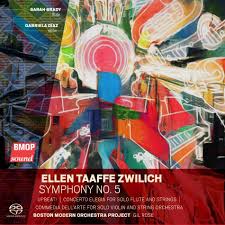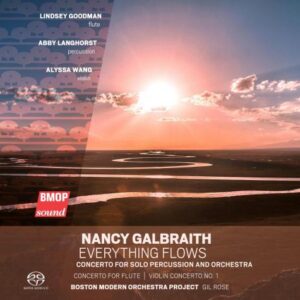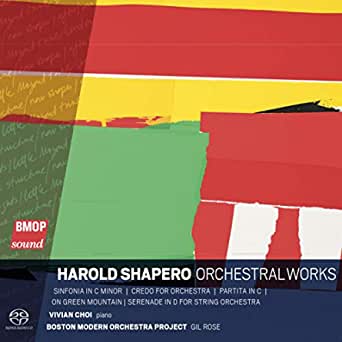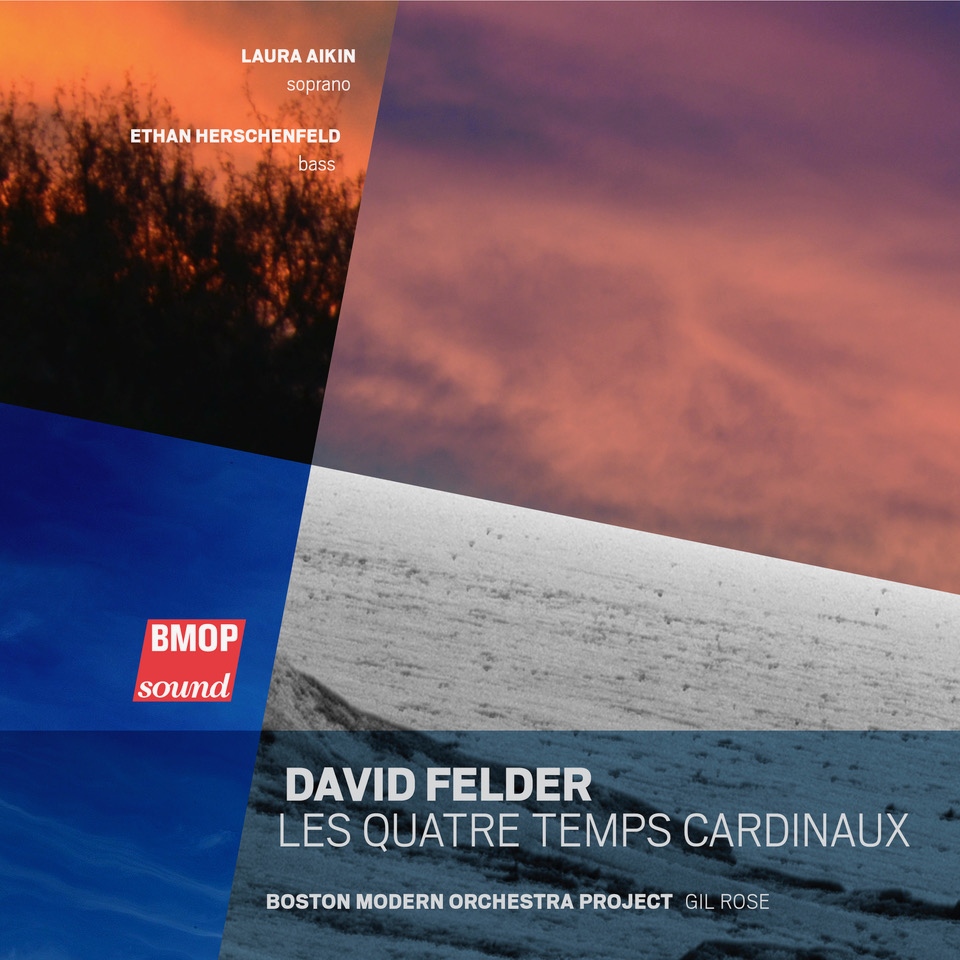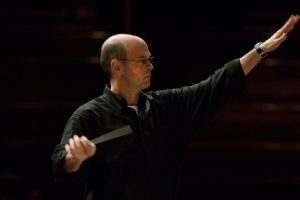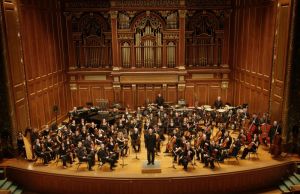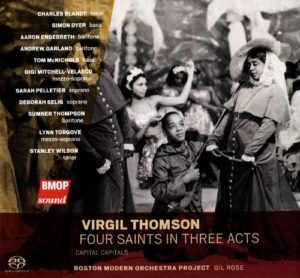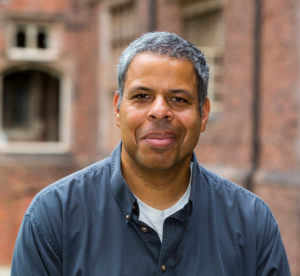Ellen Taaffe Zwilich: Symphony No. 5
Sarah Brady, flute; Gabriela Diaz, violin
Boston Modern Orchestra Project, Gil Rose, Music Director
BMOP/Sound 1098
Composer Ellen Taaffe Zwilich turned eighty-five in April, and one of the many celebrations of her life and work is a recording by Boston Modern Orchestra Project. Directed by Gil Rose and featuring flutist Sarah Brady and violinist Gabriela Diaz as concerto soloists, it is a generous program of her music. The centerpiece is Zwilich’s Symphony No. 5 (2008), a powerful four-movement work that combines traditional formal structure with a musical language of a more recent vintage.
Upbeat! (1998) opens the recording with a brief, sprightly overture that resembles its title, with neoclassical string motives and ebullient brass and percussion entrances juxtaposing in comedic fashion. Concerto Elegia for Solo Flute and Strings explores an entirely different emotion, that of mourning. The first movement, “Elegy,” introduces flutist Sarah Brady as its protagonist, with a fluid sound and emotive, but never bathetic, delivery of limpid runs and ardent crescendos. “Soliloquy” features a modal theme against poly-interval chords and another motive on the violin’s g-string. The music proceeds through a variety of melodies and embellishments that have a doleful demeanor. The “Epilogue” begins with diaphanous string verticals, and then a legato main theme that is offset by pizzicatos. Then the music shifts towards early jazz. The pizzicato theme recurs, but this time played arco, with the flute doubling it in octaves. The melodic doublings continue, with the rest of the strings going back and forth between pizzicato and sostenuto chords, and the piece ends in an apotheosis of major harmony.
Still another set of moods, along with historical characters, is explored in Commedia dell’Arte for Solo Violin and Orchestra (2012). Hundreds of years ago, each of the Commedia characters were memorably deployed at the Venice Carnival. They have evolved over the centuries; in England, one can see a resemblance to them in Punch and Judy. Both Stravinsky and Schoenberg revived them in the 1910s for Petroushka and Pierrot Lunaire, and several composers have investigated the characters since.
Zwilich depicts the commedia in four separate movements. Arlecchino (the Harlequin) is propelled by slaps in the percussion and a florid melody, with blue note glissandos, ricocheting back and forth between the soloist and strings. Alongside it are puckish pizzicatos and brawny octave punctuations. Columbina, the romantic interest of both Arlecchino and the Capitano is given appropriately heart-throbbing music and a high-lying solo line. Martial drumming accompanies Capitano as well as a brisk tune that mercurially shifts through various keys. The close of the movement is a long decrescendo of drumming: the captain marches away. Cadenza and Finale begins with bell sonorities, out of which a cadenza that coopts all three previous tunes is played with energetic brilliance. The orchestra rejoins in luminous fashion, bells signaling a final flourish from the violin and the piece’s repeated octaves to conclude.
Symphony No. 5 opens with a Lydian motive and fortissimo brass chords. After the relatively chamber-like ambience of the concertos, tutti strings and tangy brass up the ante. The transition incorporates winds in tropes on the first theme. The second theme is a Beethovenian gesture, an oscillating minor third that recalls a different fifth symphony. Timpani and hand drumming add driving intensity, but it is short-lived, broken up by a brief interruption of soft winds and high violins. Again, the forte brass and Beethoven’s minor third return. This alternation repeats once more, the movement concluding piano.
The second movement is a scherzo, with arcing chromatic lines in strings and winds, timpani punctuations, and overlapping trumpet solos. This is succeeded by the theme in mid-register winds and then emphatic repeated octaves, a gesture in common with the concertos. The strings return to the fore with quick ascending lines, played with admirable coordination by BMOP. Winds and brass repeat terse phrases, while soloists ascend too. Vigorous percussion is unleashed, and repeated chords conclude the movement. It is the briefest, but most potent, of the symphony’s sections.
The third movement is slow, alternating rigor and lyricism. It opens with a flute solo, once again in Lydian. Brass takes on a chordal role beneath altissimo register violins, which develop the flute melody into a breathless line, accompanied by downward arpeggios. Brass, snare drums and timpani are added to the proceedings as modal scalar passages are deployed in the strings. A general crescendo is brought to a halt, the texture thinning, punctuated by snippets of the arpeggiated descending line. A shift in pitch center moves the thematic material upward, helping to gather intensity. A sudden hush, and oboe and bassoon get their own solo turns. Sostenuto violins and violas return, as does the arpeggiated motive in solo clarinet and low strings. Softly, low register repetitions of the wind solos and repeated brass chords provide a final thematic utterance, and pizzicatos conclude the movement.
The finale begins another Beethoven allusion, the thrice repeated string gesture found in the Eroica Symphony. The bassoon and double flutes are pitted against repeated brass chords and cymbals, while the minor third motif, from previously, is heard again as an accompanying gesture. In the next section, horn stabs and sustained low trombones build the texture, while the violins play a wide-ranging chromatic theme. The strings then hold a long, high note while brass and percussion repeat the rhythmic ostinato that has undergirded so much of the movement, but this time with thunderous attacks. The violins return to their expansive melodic material, but at yet a slower pace, with rearticulations continuing to contrast it. The modal scales come back, descending first in strings and winds, then ascending in high violins. The symphony comes to a powerful conclusion with the repeating verticals and clangorous percussion in a slow ritardando.
Zwilich is well-served throughout, both by soloists and BMOP under Rose. These are benchmark recordings of pieces in her catalog that show both her connection to tradition and eagerness to explore. As she celebrates her eighty-fifth birth year, one hopes that more pieces are forthcoming from Zwilich. Recommended.
-Christian Carey
